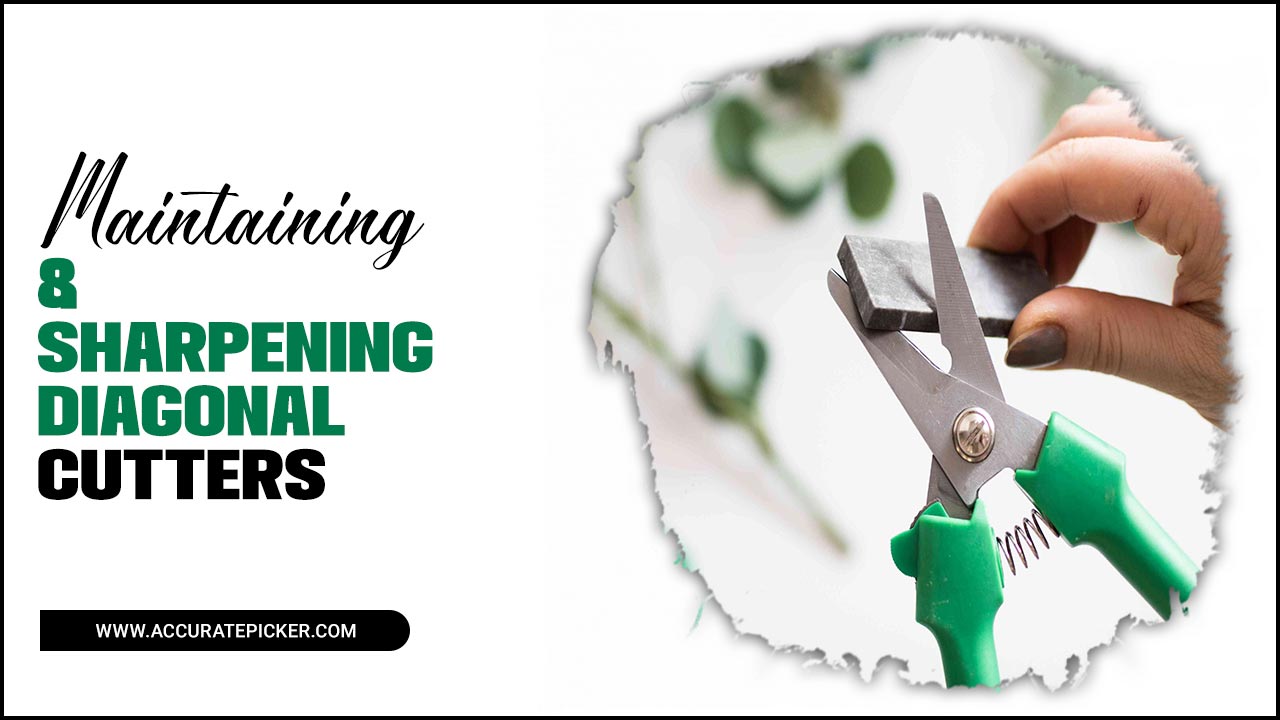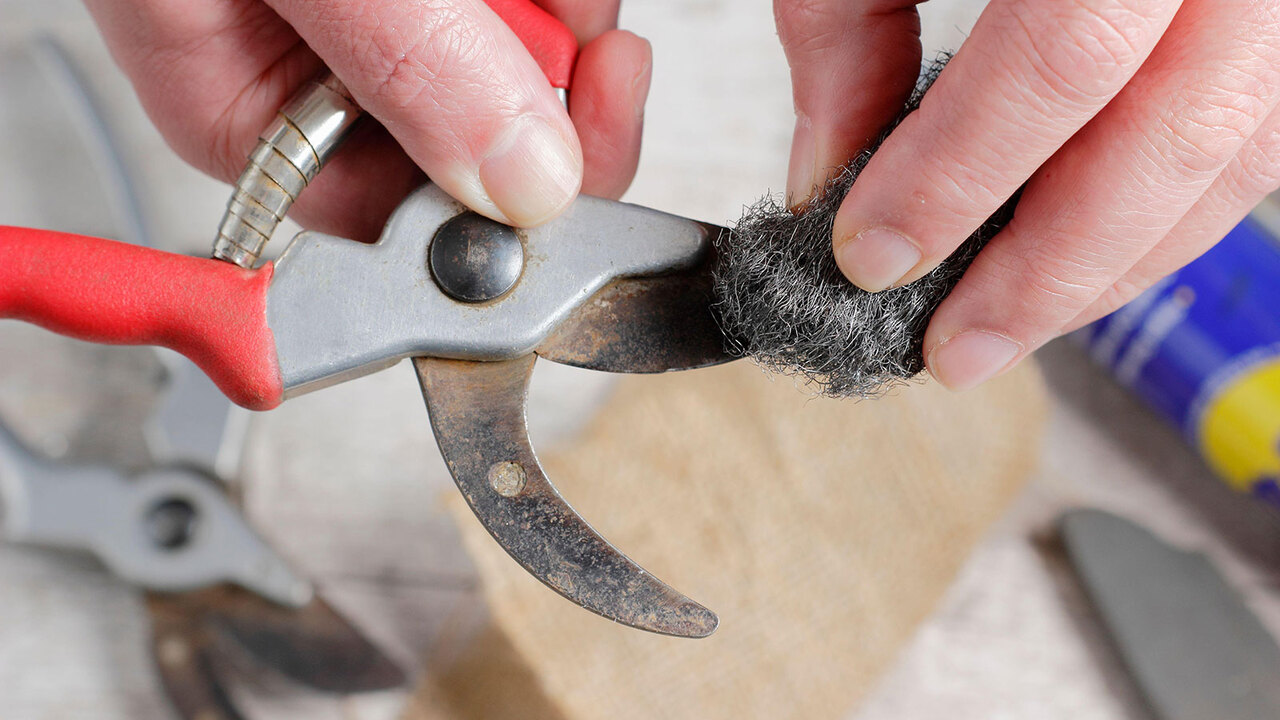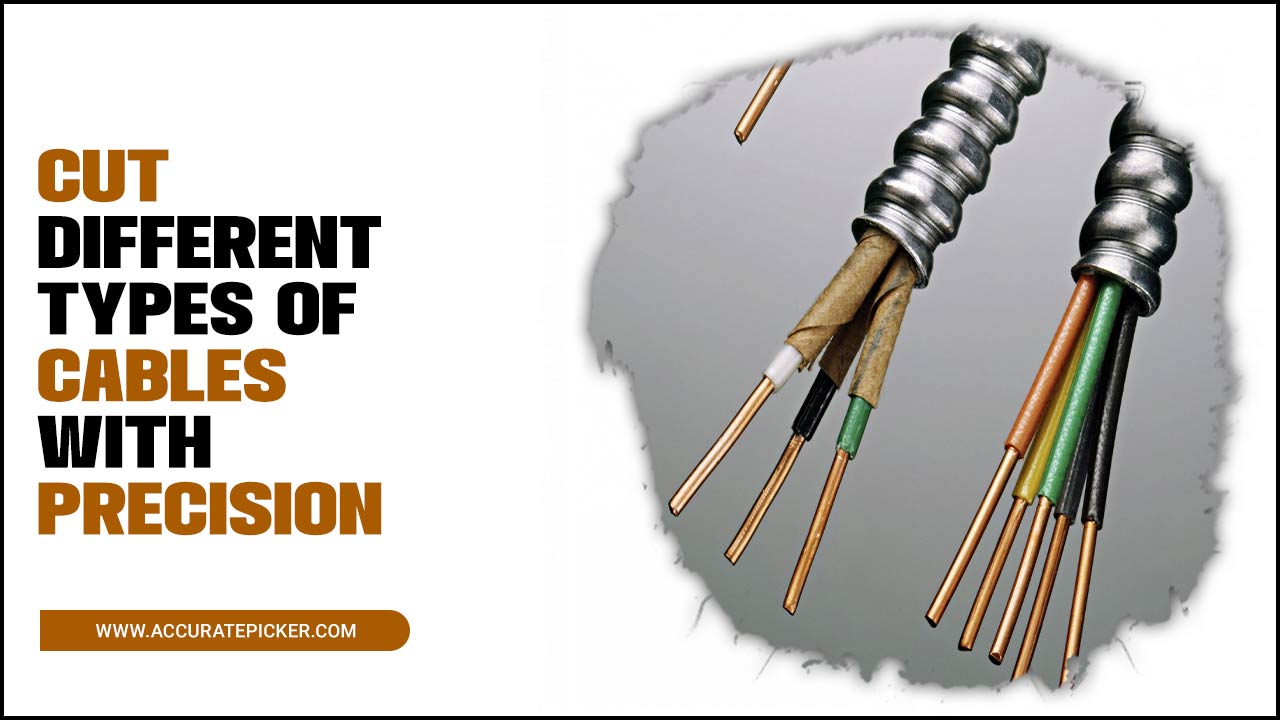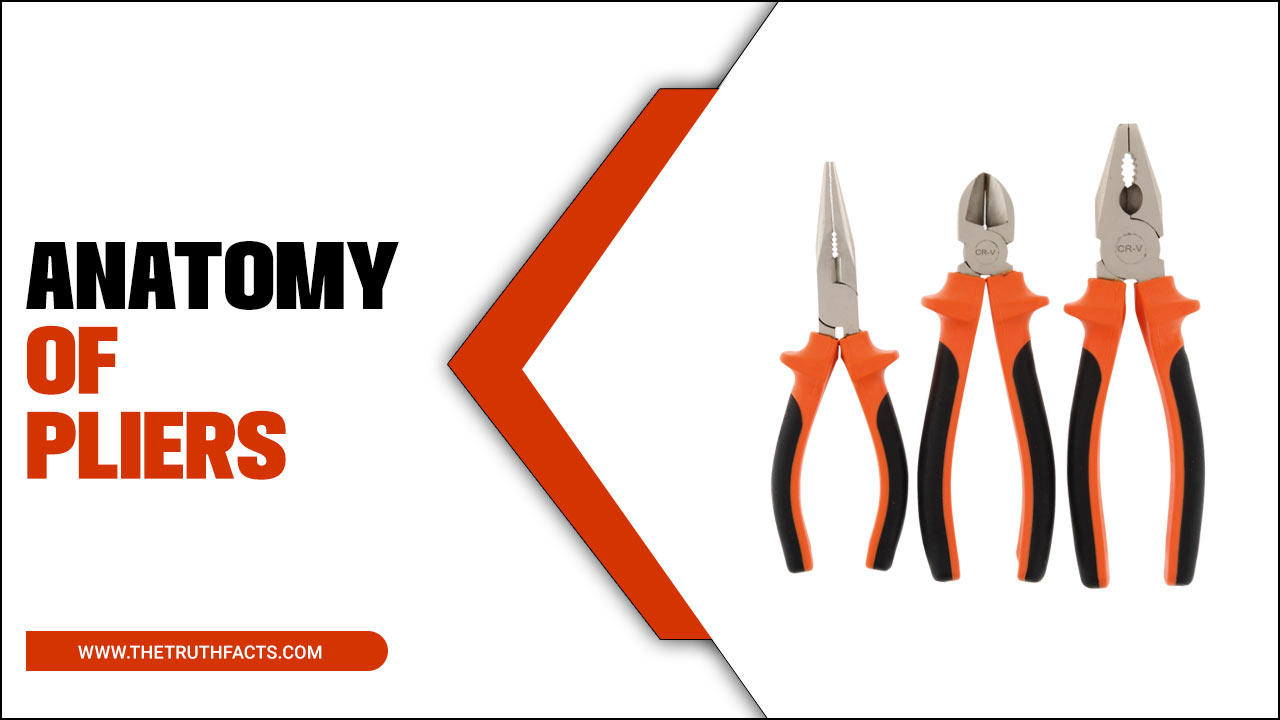Diagonal cutters are an essential tool for any electrician or hobbyist. They are used for cutting wires, stripping insulation, and other precision cutting tasks. However, if not properly maintained, they can become dull and ineffective.
In this article, we will discuss how to maintain and sharpen diagonal cutters to ensure they are always in top working condition. We will cover the importance of proper storage, the steps for sharpening, and the various methods of sharpening.
With the right maintenance and sharpening techniques, you can ensure your diagonal cutters will always be ready to work. Read on to find out how to maintain and sharpen your diagonal cutters.

Maintaining & Sharpening Diagonal Cutters

Maintaining and sharpening diagonal cutters is an important part of any tool kit. It can help extend the life of the tool and ensure it is always ready to use. In this article, we’ll look at how to maintain and sharpen diagonal cutters, the best tools and techniques to use, and the safety precautions to take when sharpening.
We’ll also discuss how to choose the right type of cutter for the job, so you get the most out of your tools. So, let’s get started and learn how to maintain and sharpen diagonal cutters.
Cleaning

Cleaning your diagonal cutters is a must to ensure their longevity and sharpness. Before you store them away, wipe off any excess grime or debris with a damp cloth. Use a dry cloth to prevent any rust or corrosion from forming.
Make sure to clean the blades thoroughly, as dirt and grit can become lodged in even the smallest crevices. To keep your cutters rust-free, consider lubricating them with a small amount of lubricant such as WD-40. This will also help keep them sharp for a longer period of time.
Finally, store your cutters in a dry place away from any extreme temperatures or moisture. By taking these steps, you can ensure that your diagonal cutters will remain sharp and rust-free for many years.
Rinse
Rinsing your diagonal cutters is an essential part of their maintenance. Even if the cutters appear clean, they need to be rinsed after each use to remove any debris, dirt, oils, and other residue. To properly rinse the cutters, first, use a damp cloth to wipe away any visible dirt and debris.
Then, submerge the cutters in warm, soapy water and use a soft-bristled brush to scrub away any remaining residue. Finally, rinse off the cutters with clean, warm water and dry them off with a clean cloth. This will ensure that your cutters are clean and free of any debris that could affect the sharpness and performance of the cutter.
Dry
Keeping your diagonal cutters in good condition is essential to getting the most out of them. To maintain and sharpen your diagonal cutters, it is important to keep them dry. You should wipe off any moisture or debris after each use. If you need to clean the blades, use a dry cloth.
Once the blades are clean, you should apply a small amount of oil to the cutting edges, as this will help to keep them sharp and rust-free. You can also use a sharpening stone to sharpen the blades, as this will help to keep them in top condition. Finally, store the cutters in a dry place, such as a drawer or cabinet.
This will help to extend the life of your tools and ensure that they perform their best.
Lubricate
Maintaining and sharpening your diagonal cutters is essential for a clean, precise cut. Lubricating your cutters is a crucial step in the sharpening and maintenance process. Using a light machine oil, apply a few drops to the cutter blades, paying special attention to the pivot points. This will ensure the blades move smoothly and will help prevent rust and corrosion.
Make sure you wipe away any excess oil with a dry cloth. Additionally, you can apply a light spray of lubricant to the cutter handles to ensure a smooth, comfortable grip.
Inspect
Inspecting diagonal cutters is the first step in maintaining and sharpening them. Start by checking the blade for any damage such as dents or chips. Make sure the cutting edges are straight and have a good uniform shape.
Look for any signs of wear or oxidation on the blade. You should also check the handles for any cracks or other signs of damage. Inspect the spring mechanism and make sure it is working correctly. Finally, check the rivets that keep the blades together to ensure they are secure.
If any of these components are damaged or worn, it is time to replace the cutters.
Sharpening

Sharpening diagonal cutters is an important part of maintaining them and keeping them in working condition. To sharpen the cutters, you should first choose the correct sharpening file. It should be a flat file with a single cut and a diameter that is slightly larger than the cutter’s blade width.
You should hold the file at a 45-degree angle, and make sure to keep it straight. You should push the file away from you, and apply light pressure as you move the file across the blade. Make sure to sharpen both sides of the cutter. When you’re done, check to make sure that the blade is sharp and that the sides are even.
If they are not, sharpen them until they are. Finally, rinse the cutters in mineral spirits and dry them with a clean cloth. Following these steps will ensure that your diagonal cutters remain sharp and in good condition.
File
Diagonal cutters are essential tools for a variety of jobs, from snipping wire and electrical components to cutting zip ties and opening packaging. To ensure a long lifespan and good performance, it is important to maintain and sharpen your diagonal cutters regularly. To do this, you will need a file.
Start by selecting a file that is the same size as the cutting edge of the diagonal cutters. This will ensure you are able to reach the entire cutting edge. Place the file on a flat surface and hold it in place with a vice. Hold the diagonal cutters in your dominant hand and use the other to hold the file.
To sharpen the diagonal cutters, move the file gently along the cutting edge, pushing it in the same direction as the blade. Move the file slowly and lightly, and make sure you are filing the entire cutting edge. Continue until the edge is sharp.
Once you have finished filing the edge, use a smooth cloth to remove any filings. You can also use a high-grit sandpaper and a light lubricating oil to help polish the blade. When finished, use a rag to clean away any remaining oil.
By following these steps, you can maintain and sharpen your diagonal cutters and ensure they have a long lifespan. With regular maintenance, you can ensure your diagonal cutters will be in top condition for any job.
Sand
Sand is an important step in maintaining and sharpening diagonal cutters. Begin by lightly sanding the cutting edge with an emery cloth to remove any rust or corrosion. Be sure to sand in the same direction that the cutting edge is facing. This will help to ensure the edge remains sharp and in good condition.
Once the rust and corrosion have been removed, use a fine-grit sandpaper to finish the job. Make sure to sand each side of the blade for an even finish. Finally, use a polishing cloth to give the blade a shiny, polished look.
Following these steps will help to ensure your diagonal cutters remain sharp and in good condition for years to come.
Stone
Sharpening diagonal cutters requires a flat stone. It is important to use a stone that is made specifically for sharpening tools. A water stone is the best option, as it is softer than oil stones and will not damage the cutting edges of the tool. Make sure to use a minimum of 1000 grit to ensure a smooth and even edge.
It is important to maintain the same angle as the original edge while sharpening. Start by laying the stone flat on a hard surface and place the tool at a 45 degree angle to the stone. Keep the angle consistent while moving the tool back and forth along the surface of the stone. For best results, sharpen both sides of the tool evenly.
Polish
Polishing your diagonal cutters is a great way to keep them sharp and in a good condition. To do this, start by wiping down the cutters with a clean cloth to remove any dirt or debris. Then, use a soft cloth to apply a small amount of metal polish to the cutting edge and blade. Finally, use a soft brush to gently buff the cutters until they shine.
It is important to use gentle strokes to avoid damaging the blades. After polishing, wipe the cutters again with a clean cloth to remove any excess polish. Regularly sharpening and polishing your diagonal cutters can help ensure they last a long time and perform their best.
Conclusion
Diagonal cutters are essential tools for making precise cuts in a variety of materials. To ensure that they remain in top condition, it is important to maintain and sharpen them regularly. This can be done by filing the edges of the cutters with a fine-toothed file, lubricating the blades with oil, and periodically replacing the cutting edges.
Additionally, it is important to store them in a dry place away from moisture and dirt. With proper care and maintenance, diagonal cutters can last for years and provide reliable performance.
FAQ’s
1.How Do You Sharpen Bolt Cutters?
Ans: The best way to sharpen bolt cutters is to use a file. Start by rubbing the file against the teeth of the bolt cutters in a forward motion. Take your time and use a light touch to keep the teeth of the bolt cutters even. Once you’ve sharpened the entire length, test it on a scrap piece of material to make sure it is sharp enough.
2.How Do You Maintain Diagonal Pliers?
Ans: To maintain diagonal pliers, clean them after each use by wiping them down with a cloth. Apply a light coating of oil to any parts that move or rub against each other. Check for any signs of wear or damage to the cutting edges. Replace the pliers when they become too worn to be effective.
3.What Is The Maintenance Of Side Cutter?
Ans: The maintenance of a side cutter involves regularly checking for signs of wear, sharpening the blades, and replacing the blades when they become too dull. It is also important to ensure that the blades stay properly lubricated and that the cutting edges remain sharp. Proper maintenance can extend the life of a side cutter and keep it in optimal operating condition.
4.How Do You Clean Side Cutters?
Ans: First, use a small brush to remove any dirt or debris from the surface of the cutters. Next, use a cloth dampened with a degreasing agent such as rubbing alcohol to clean the entire surface of the cutters. Third, use a small brush to scrub away any remaining dirt or grease. Finally, use a cloth dampened with distilled water to rinse the cutters and then dry with a clean cloth.
5.How Do You Sharpen Diagonal Pliers?
Ans: To sharpen diagonal pliers, use a bench grinder with a medium-coarse grinding wheel. Secure the pliers in a vice and angle the pliers to the wheel. Apply light pressure and move the pliers across the wheel to sharpen the cutting edges. Finally, apply honing oil to the cutting edges to keep them sharp.
6.How Do You Clean Pliers Step By Step?
Ans: 1. Start by wiping off any dirt or grime from the pliers with a soft cloth.
2. Dip the pliers in a warm soapy water solution and scrub them with a soft brush.
3. Rinse the pliers off with warm water and dry them off with a soft cloth.
4. Finally, apply a light coating of oil on the moving parts of the pliers for protection.





